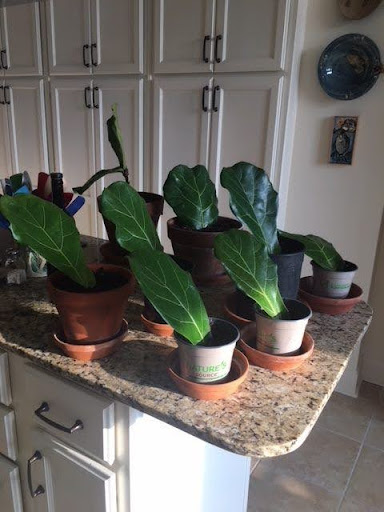Are you wondering how you propagate a fig tree, especially the popular Ficus lyrata (fiddle leaf fig)? Whether you’re looking to expand your indoor garden or enhance your plant care skills, understanding how you propagate a fig tree is both a rewarding and practical experience. From selecting the right cutting to avoiding common mistakes like rooting single “zombie leaves,” successful propagation relies on timing, technique, and a little patience. In this guide, we’ll cover step-by-step methods to propagate a fig tree, the best types of cuttings to use, and how to encourage healthy root development every time. Let’s dive in.
What Is the Best Way to Propagate a Fig Tree?
The most reliable way to propagate a fig tree is by using stem cuttings, particularly node cuttings. You can root these in soil, water, or even try air layering. But not all propagation methods are created equal—especially if you’re using only a single leaf.
Why You Should Avoid Single Leaf Propagation (Zombie Leaves)
One of the most common mistakes people make is trying to root a single fig leaf. While it might form roots, this leaf lacks a node—meaning it can’t sprout a new branch or grow into a full plant. The result? A “zombie leaf.” It lives, but it never grows.
To successfully propagate a fig tree, always include at least one node, preferably two or three. This node is where new buds and roots form.
How to Propagate a Fig Tree in Soil
Step 1: Prepare Your Propagation Soil Mix
Choose a light, well-draining propagation mix. It should retain moisture without becoming soggy.
DIY propagation soil mix options:
- ½ perlite + ½ peat moss
- ½ perlite + ½ vermiculite
- 1/3 sand + 1/3 perlite + 1/3 peat moss
Avoid using regular garden soil as it’s too heavy and may carry pathogens.
Step 2: Take the Cutting
- Use sharp, sterilized pruners.
- Cut a 4–6 inch stem with at least 2–3 nodes.
- Angle the cut to increase rooting surface area.
- Remove lower leaves, leaving one or two at the top.
Step 3: Apply Rooting Hormone
Dip the cut end in rooting hormone to stimulate faster root development. While fig trees root relatively easily, this step helps especially with woodier stems.
Step 4: Plant the Cutting
- Pre-moisten the soil.
- Pre-poke a hole with a pencil to avoid scraping off the rooting hormone.
- Insert the cutting so about ⅓ of the stem is buried.
- Firm the soil around the base to hold it upright.
Step 5: Create a Humid Environment
- Cover the cutting with a clear plastic bag to maintain humidity.
- Mist daily to keep leaves hydrated.
- Keep in bright, indirect light—not direct sun.
Step 6: Monitor and Wait
- Don’t overwater—moist, not soggy, is the goal.
- Roots typically develop in 4 to 6 weeks.
- Watch for new leaf growth at the node, which indicates success.
How to Propagate a Fig Tree in Water
Another popular method is water propagation, which works well for visual learners.
Steps:
- Take a cutting with at least one node.
- Place it in a glass of clean water, ensuring the node is submerged.
- Change the water every few days.
- Place near a window with indirect light.
- Once roots are a few inches long (usually 4–6 weeks), transfer to soil.
Tip: Water propagation is great for monitoring root development but make sure not to leave the roots in water for too long or they may struggle to adjust to soil.
What About Air Layering?
Air layering is an advanced propagation technique best used for mature fig trees. It involves:
- Wounding a branch just below a node.
- Wrapping the wound with moist sphagnum moss.
- Covering it with plastic to retain moisture.
- Waiting several weeks until roots form, then cutting and potting the rooted section.
This method has a high success rate but requires more patience and care.
Post-Propagation Care
After your fig cuttings have rooted and been potted:
- Water sparingly until roots establish.
- Gradually introduce them to more light.
- Fertilize lightly with a diluted houseplant fertilizer after new leaves appear.
Avoid stressing the new plant by overwatering or exposing it to harsh sunlight too soon.
Final Thoughts
So, how do you propagate a fig tree? The key is starting with the right cutting—with nodes, not just leaves—and providing a moist, well-drained environment for roots to develop. Whether in soil or water, fig tree propagation is both accessible and rewarding, even for beginner plant parents.
Avoid the myth of single-leaf propagation—stick to node cuttings for real success. In 4–6 weeks, you’ll likely see new roots and fresh leaves, marking the start of a whole new fig tree.
Clearing Up Confusion
Can I grow a fig tree from a single leaf?
No. A single fig leaf without a node won’t grow into a full plant. It may root, but it won’t sprout new growth.
How long does it take for fig cuttings to root?
Typically, 4–6 weeks. Root development may be faster in warm, humid conditions.
Should I use rooting hormone for fig tree propagation?
Yes, especially for woody stems. It helps speed up and improve root formation.
Is it better to propagate in water or soil?
Both methods work. Water propagation lets you see root growth, while soil is more natural and avoids transplant shock.
When is the best time to propagate fig trees?
Late spring or early summer is ideal. Warmth and longer daylight hours encourage faster rooting.
For more insights and expert advice, keep an eye on Homify Magazine. Stay inspired, stay informed!
